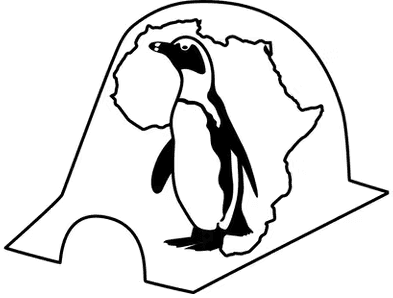Notes from April 2016 by Kevin Graham
In March 2016 the planning process to develop, test, and install a new and more effective artificial nest for African penguins to call home was begun. Members of numerous conservation organizations, governmental offices, zoological facilities, and field researchers came together to discuss what the specific needs of the birds during nesting attempts were and how those needs could be properly addressed. Participants (either through attendance or submission of information) included colony managers from Robben Island, Dyer Island, Bird Island, Boulder’s Beach, Dassan Island, Stoney Point, and Namibia. Additional participants included representatives from SANPARKS, Cape Nature, Dyer Island Conservation Trust, SANCCOB, BirdLife International, PAAZA, AZA SAFE, etc.
Of great importance in the design of the nest was the ability for the interior microclimate to be controlled within a specific range for both temperature and humidity. The knowledge, experience, and skills that each member of the workshop brought enabled an extremely productive range of conversations that ultimately concluded with a plan in place to start the design and testing process.
At this meeting it was by majority consent that Trudi Malan of Dyer Island Conservation Trust would work in the role as South African Coordinator for the Artificial Nest Development Project, joining Nest Project Coordinator Kevin Graham of the Dallas Zoo and AZA SAFE. It was also decided at this time that all communication for the group would be coordinated through an online discussion/sharing site (specifically, Freedcamp) for the initial rounds of development and testing in order to ensure that all participants would have the ability to remain fully involved in the process to the level that they chose.
To begin this process, all documents, presentations, and meeting notes from the workshop were uploaded into the site for review and future reference by all participants.
After extensive research, the first Phase 1 Draft Protocol was developed and submitted in late May 2016 and was published to Freedcamp for review and comments. The Habitat Working Group offered their input and this was integrated into a new draft which was published to Freedcamp for secondary review on 17 July 2016 with a minor revision added the following day. The final draft protocol was published for a 30 day review on 25 July 2016 to begin testing by early September.

First Planning Meeting
Trudi Malan of Dyer Island Conservation Trust holds a rescued African penguin chick. During the first planning meeting, she took the role of South African coordinator of the Artificial Nest Development Project.
Phase 1 testing was planned to consist of numerous prototype nest designs and construction materials compared against each other under consistent circumstances. In order to compare performance of the new designs against previously utilized nests the testing would also include four older design nest structures. This round of testing was scheduled for a duration of 120 days, during which interior micro-climate data would be collected from each nest on thirty minute intervals. This process would also include a weather monitoring system to record ambient conditions for comparison.
An update on the progress of Phase 1 test preparation was presented to the Habitat Working Group by Trudi Malan in mid-June 2016 and this was posted to Freedcamp in late June. This not only included the Phase 1 progress to date but also an early look at goals for the upcoming second phase of the nest development. An E-News article was submitted to PAAZA and affiliated facilities by John Werth and the project was logged with the National Research Authority on 27 July 2016 in preparation for the start of official testing. The extensive research and planning for the development of the artificial nest prototypes led to a long four month wait while the data acquisition proceeded.





